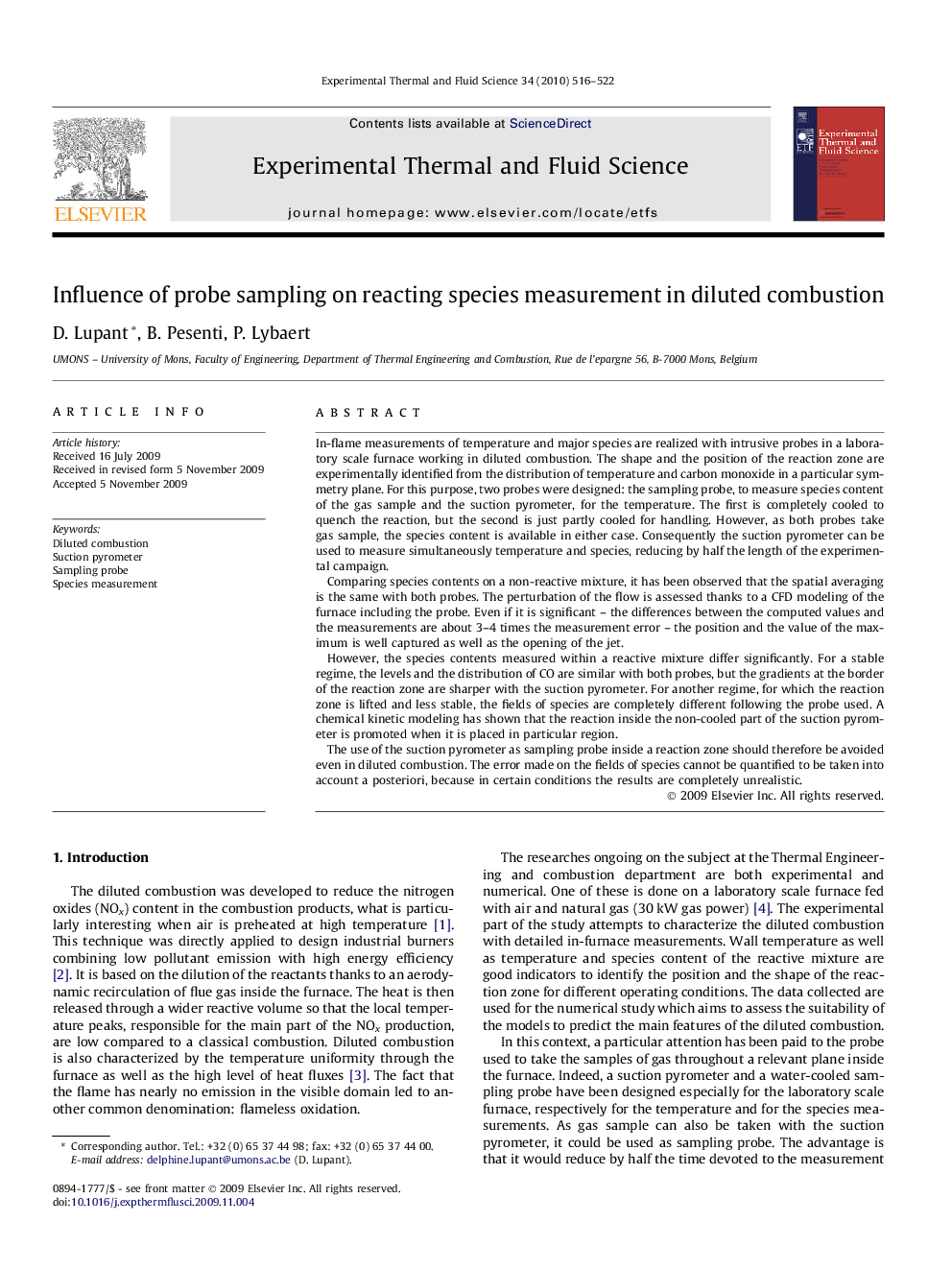| Article ID | Journal | Published Year | Pages | File Type |
|---|---|---|---|---|
| 652160 | Experimental Thermal and Fluid Science | 2010 | 7 Pages |
In-flame measurements of temperature and major species are realized with intrusive probes in a laboratory scale furnace working in diluted combustion. The shape and the position of the reaction zone are experimentally identified from the distribution of temperature and carbon monoxide in a particular symmetry plane. For this purpose, two probes were designed: the sampling probe, to measure species content of the gas sample and the suction pyrometer, for the temperature. The first is completely cooled to quench the reaction, but the second is just partly cooled for handling. However, as both probes take gas sample, the species content is available in either case. Consequently the suction pyrometer can be used to measure simultaneously temperature and species, reducing by half the length of the experimental campaign.Comparing species contents on a non-reactive mixture, it has been observed that the spatial averaging is the same with both probes. The perturbation of the flow is assessed thanks to a CFD modeling of the furnace including the probe. Even if it is significant – the differences between the computed values and the measurements are about 3–4 times the measurement error – the position and the value of the maximum is well captured as well as the opening of the jet.However, the species contents measured within a reactive mixture differ significantly. For a stable regime, the levels and the distribution of CO are similar with both probes, but the gradients at the border of the reaction zone are sharper with the suction pyrometer. For another regime, for which the reaction zone is lifted and less stable, the fields of species are completely different following the probe used. A chemical kinetic modeling has shown that the reaction inside the non-cooled part of the suction pyrometer is promoted when it is placed in particular region.The use of the suction pyrometer as sampling probe inside a reaction zone should therefore be avoided even in diluted combustion. The error made on the fields of species cannot be quantified to be taken into account a posteriori, because in certain conditions the results are completely unrealistic.
